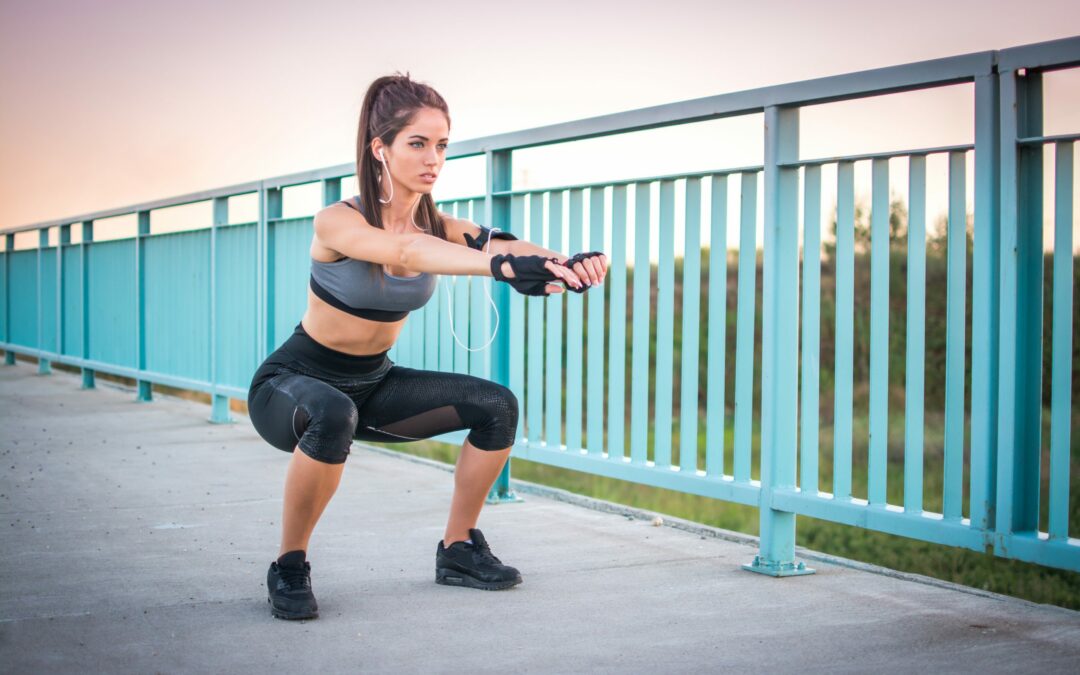Written by Tom Christ PT, DPT
Body Weight Squat
You may have noticed that your physical therapist often asks you to perform a number of different movements such as walking, squatting, standing on one leg, and bending in different directions during the initial evaluation, or perhaps even during every visit. Sometimes these motions seem completely irrelevant to the condition you are being treated for. For example, why does my therapist need to watch me walk and squat if I have shoulder pain? Assuming you don’t walk on your hands, that is a completely rational thought. Motion Stability’s new functional movement blog and Instagram series can help explain.
Let’s stick with the squat example. Regardless of what injury or ailments you are coming to PT for, the squat is a tremendous way to assess movement quality of the entire body from the toes up to the neck. Because of how frequently we all perform squatting motions when getting in and out of a chair, picking things up off the ground or a lower cabinet, petting our dogs, and many other daily activities, a faulty squat pattern can often be a contributor to pain conditions almost anywhere in the body. Assessing an individual’s squat pattern provides valuable information on mobility, strength, and motor control.
Mobility: Watching an individual perform a squat pattern is the quickest way to get a great deal of information on an individual’s mobility from the ankles all the way up to the neck. Below is a list of common deviations seen at various joints, and what information it may provide the assessing therapist. Keep in mind that presence of any deviations is not a diagnosis within itself, but provides the therapist a direction of what to look closer at during their evaluation.
- Toes pointed outward: May indicate stiff ankles or tight calves, or laterally (outward) positioned hips.
- Knees staying behind the arch of the foot: May indicate stiffness of the ankle joint and/or tightness of the calves.
- Inability to keep the chest up and compensatory chin elevation: Commonly indicates stiffness of the hip and/or ankle joints. The individual will raise their head and neck in order to maintain their vision to what is front of them rather than towards the ground.
- Butt wink at the bottom: Often indicates hamstring tightness, pulling the pelvis into what is called a posterior tilt.
Strength and/or Motor Control: This one is a little more simple. The inability to perform a full squat due to muscle weakness is a clear indicator of dysfunction, and in fact, can be correlated to increased fall risk. Sometimes an individual will have the strength to properly perform a squat, however due to faulty motor control they may utilize or underutilize certain important muscles. The following is a list of common deviations seen at various joints due to either overactive, underactive, or weak muscles
- Weight shifted to one side: Oftentimes will cue the PT that the side weight is shifting away from is either painful or weaker, or potentially one leg may be longer than the other.
- Feet rolling inward (pronation): May indicate that the muscles of the foot arch are weak or not being used properly, as well as the lateral hip muscles (gluteus medius).
- Knees caving inward: Oftentimes indicates weakness or under activation of the lateral hip muscles (gluteus medius).
- Knees tracking in front of toes: May indicate the individual prefers to use their quad muscles and may have weak or inactive glute muscles.
- Excessive arch in the low back: May indicate weakness of the abdominal muscles, or the individual habitually overuses the low back muscles.
- Inability to keep the chest up and compensatory chin elevation: In addition to the potential mobility problems listed above, this deviation can also indicate quad weakness, glute weakness, and improper overuse of the back muscles.
- Minimal to no trunk lean: Often seen in older individuals, this may indicate weakness of the glute muscles and over reliance on the quads.
The above dysfunctions can lead to further compensations throughout the body that may cause undo stress and subsequent pain almost anywhere in the body. If you feel that your squat mechanics may be off, don’t hesitate to see a physical therapist for exercises and techniques to improve your squat!
Be sure to follow our Functional Friday’s Instagram series @motionstability for more information and helpful videos!


Recent Comments